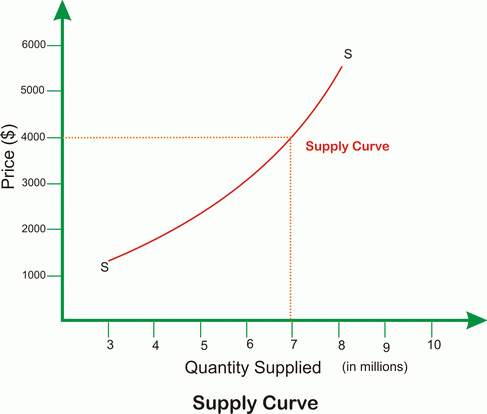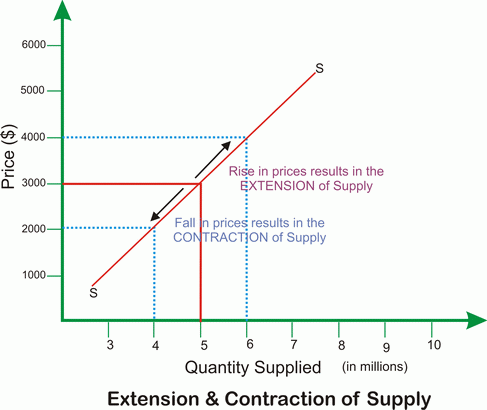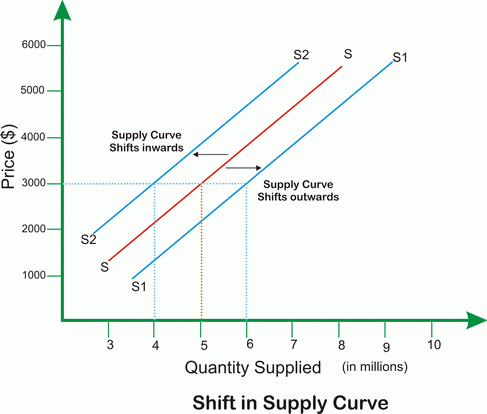What is Supply?
Supply refers to the amount of goods and services firms or producers are willing and able to sell in the market at a possible price.
Law of Supply
It states that when the price of a commodity rises, the supply for it also increases.
The higher the price for the good or service the more it will be supplied in the market. The reason behind it is that more and more suppliers will be interested in supplying those good or service whose prices are rising.

Watch a Video
Movement along the Supply Curve
Extension of supply
It refers to the increase in supply of a commodity with the rise in price, other factors remaining unchanged.
Contraction of supply
It refers to the fall in supply of a commodity when its prices fall, other factors remaining unchanged.

Shift in Supply Curve
When factors other than price affect the supply it results in the shift of supply curve. The supply curve may move inward or outward.
A shift of supply curve outwards to the right will mean an increase in supply at the same price level.
When the supply curve moves inwards to the left it means that less is being supplied at the same price level.

Watch a Video
Factors affecting Supply
Price of the commodity: A rise in price will result in more of the commodity being supplied to the market and vice versa.
Prices of other commodities: For example if it is more profitable to produce LCD TVs then producers will produce more LCD TVs as compared to PLASMA TVs. Thus the supply curve for PLASMA TVs will shift inwards i.e. a fall in supply.
Change in cost of production: Increase in the cost of any factor of production may result in the decrease in supply as reduced profits might see producers less willing to produce that commodity.
Technological advancement: Improvement in technology results in lowering of cost of production and more profits for the producer and thus more supply of that commodity.
Climate: Climate and weather conditions affect the supply of commodities especially agricultural goods.





